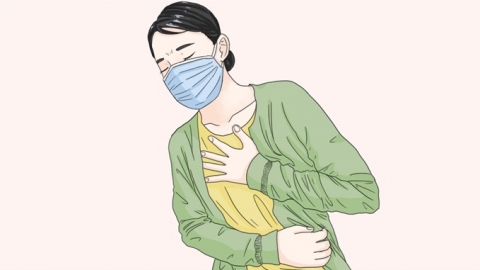What causes itching of the female nipple?
Generally, the main causes of itchy nipples in women include irritation from clothing friction, hormonal changes, nipple eczema, mastopathy, and nipple inflammation. If discomfort occurs, timely consultation at a regular hospital is recommended. Detailed analysis is as follows:
1. Clothing Friction Irritation
Wearing rough-textured or tight-fitting undergarments can repeatedly rub against the nipples, damaging the skin barrier and causing itching. It is important to choose cotton, loose, breathable undergarments to reduce friction between the nipples and clothing, avoid frequent changes in undergarment materials, and maintain cleanliness and dryness in the nipple area to alleviate itching.

2. Hormonal Changes
Fluctuations in estrogen and progesterone levels during puberty, pregnancy, lactation, or the menstrual cycle may stimulate breast tissue and nipple skin, leading to itchy nipples. This condition is usually physiological and does not require special treatment. Maintaining nipple cleanliness, avoiding scratching, and wearing comfortable undergarments can help alleviate symptoms. The itching typically subsides gradually once hormone levels stabilize.
3. Nipple Eczema
The skin on the nipple and areola may develop an inflammatory reaction due to factors such as allergies or a damp environment, manifesting as itching, redness, papules, and possibly exudation and crusting in severe cases. Under a doctor's guidance, topical medications such as hydrocortisone cream, desonide cream, or tacrolimus ointment can be used to reduce inflammation and relieve itching. Avoiding allergens and keeping the nipple area dry are also important measures.
4. Mastopathy
Endocrine disorders can lead to breast tissue hyperplasia and ductal dilation, which may stimulate nerves around the nipple, causing itching. This is often accompanied by breast distension, pain, and lumps. Under medical guidance, medications such as Rupixiao tablets, Xiaoyao pills, or Xiaojin pills can be taken to regulate the endocrine system and alleviate hyperplasia. Maintaining a regular lifestyle and avoiding emotional fluctuations also help reduce itching and breast discomfort.
5. Nipple Inflammation
When the skin of the nipple is damaged, bacterial invasion can cause inflammation, presenting as itching, redness, swelling, and pain. In severe cases, purulent discharge may occur. Under a doctor's guidance, topical antibiotics such as mupirocin ointment or fusidic acid cream, and oral antibiotics such as cefuroxime axetil tablets can be used to control infection and reduce inflammation. If an abscess forms, incision and drainage of the nipple abscess may be required to remove the pus and promote recovery.
In daily life, it is important to maintain cleanliness of the nipple and areola area and avoid using irritating cleansers; choose appropriate undergarments to reduce nipple irritation; avoid scratching to prevent skin damage and subsequent infection; and undergo regular breast examinations to detect and treat breast-related diseases promptly, thus maintaining breast health.










